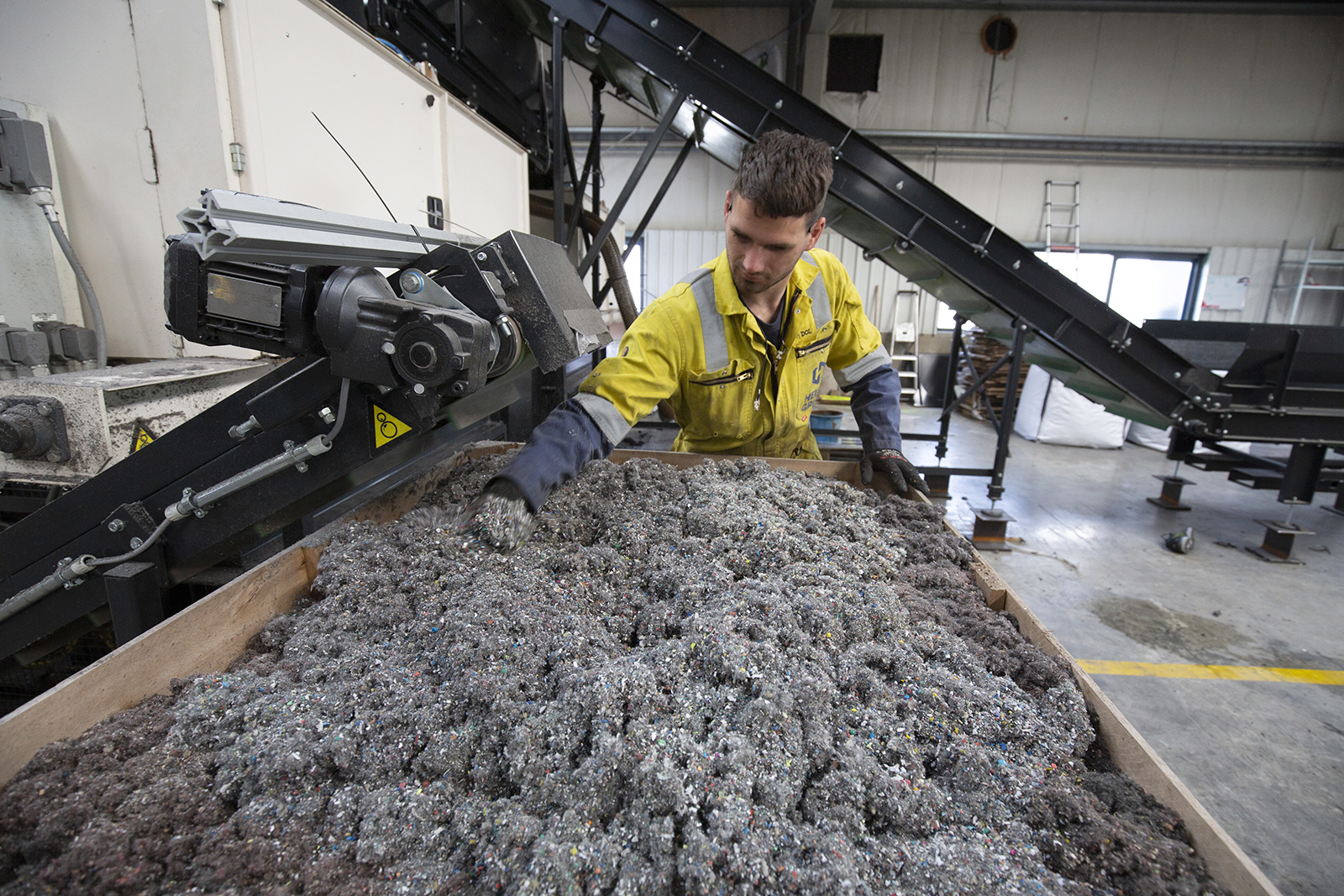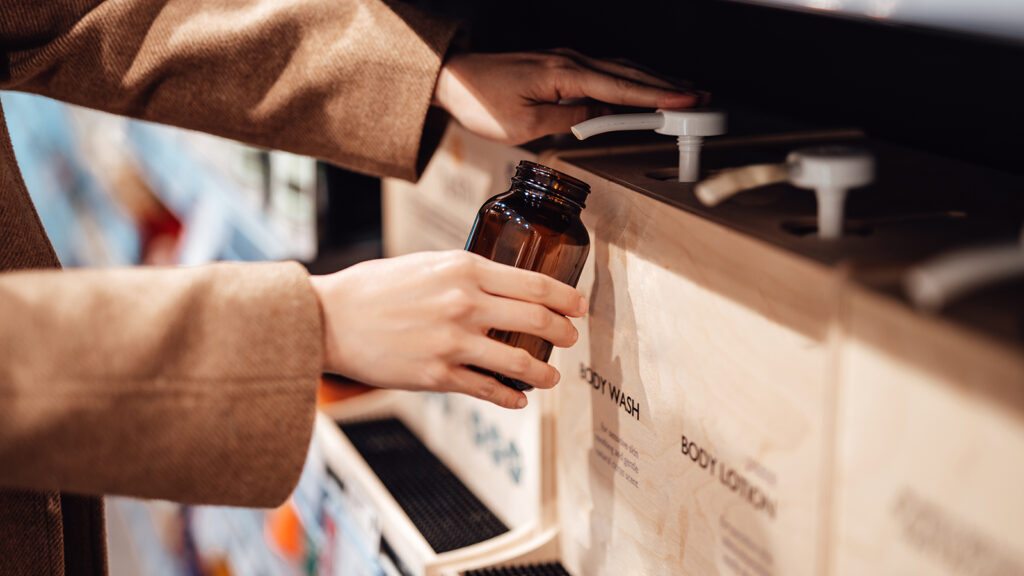
Materials from new and used sport shoes come from the recycling machine at Fast Feet Grinded, the world's first shoe recycling factory processing shoes 100% into raw materials plastics, rubber, textile and foam on April 26, 2022 in Wieringerwerf, Netherlands. Over 23,5 billion shoes are produced each year and less than 5% will be recycled while the rest end up in landfills or are incinerated.
Photo: Michel Porro/Getty Images
Net-zero targets are driving companies’ efforts to reduce their carbon emissions by increasing circularity within their supply chains, especially as many of their emissions are Scope Three, which are the result of activities of third parties such as suppliers.
Turning a linear supply chain into a more circular one is far from easy. BRINK spoke to Martijn Lopes Cardozo, CEO of Circle Economy for some tips.
LOPES CARDOZO: A lot of companies have net-zero targets, often science-based, but a lot of the targets have been set without actually knowing how to fully accomplish them. So companies are now trying to figure that out, and what they are finding is that they often need circular economy strategies to accomplish them.
Ultimately, over 50% of global greenhouse gas emissions are tied to material handling and use. So, you could say: There is no net zero without a circular economy. The second big driver for going circular is the way geopolitics is entering the boardroom. From a geopolitical perspective, we’ve become quite dependent on a few sources for a lot of materials, and how resilient is that?
The third element, mostly in Europe, is that regulation is increasing at a high rate. What you’re now seeing is regulation published twice a year, including the extended producer responsibility, the right to repair, abolishing single-use plastics and so forth. This is starting to impact businesses. In addition, with the EU’s new Corporate Sustainability Reporting Directive (CSRD) in place, many more companies need to start reporting on their progress in the circular journey.
In more customer-facing industries with strong brands, you see the brand being a big driver. So food brands like Unilever and clothing brands like Patagonia, where the circular economy provides real brand value and where consumers are aware of this.
The circular economy is becoming much more part of the mainstream than it was a couple of years ago and companies need to prepare for it.
Changing Your Business Model Is Not Easy
BRINK: So imagine you are a business that’s just starting to look at its Scope 3 emissions. What are the biggest challenges trying to move from a linear-sourcing model to a more circular one?
LOPES CARDOZO: I do see a lot of businesses struggling with this because it is a complicated transition. You’re often talking about changes in your supply chain that involve customers, suppliers, and people you may have had very little interaction with.
In a lot of cases, with circularity, you have to change your business model — which by definition, is new and can be risky. One of the things we have done as an organization to counteract this problem is launch a free digital tool called the Knowledge Hub, which contains thousands of circular case studies from across the world. Here, business leaders can see circularity in action and get inspired.
It also really depends on what industry you’re in. Some companies might already have a more circular business model without realizing it. Take for instance, aluminum or steel that can easily be upcycled.
Whereas there are other cases where you really have to almost reinvent your model and start very much from a very customer-centric perspective in terms of “What problem am I trying to solve? What job do I need to get done?” and “How can I fulfill that customer need with a very different business model?”
We see a lot of companies getting much more involved when their product reaches end-of-life, for instance, in the textile world. Traditionally, you would sell your product and then you are no longer involved. But now, a lot of brands want to be involved at the end-of-life. So we have brought these companies together pre-competitively to work on those solutions and to start experimenting together to get the business model to work.
BRINK: So where are the industries that are making real progress, would you say?
LOPES CARDOZO: In more customer-facing industries with strong brands, you see the brand being a big driver. So food brands like Unilever and clothing brands like Patagonia, where the circular economy provides real brand value and where consumers are aware of this.
Another progressive sector is metals, which can be reused quite effectively. Also in batteries, where there’s a big end-of-life issue, that’s where circularity is quite natural and it’s also often a more attractive business model. Using aluminum as an example: It’s quite expensive to make aluminum out of ore, but if you make it from recycled materials, it’s actually much more attractive both from an energy as well as a price perspective.
And then, there are the places where new business models really take hold. The product-as-a-service model is a great example. So in Europe, you have a company called Swapfiets — fiets is the Dutch word for “bike” — and what they do is lease bikes to students and a lot of young professionals. And that’s a superior business model because many people really want to have access to a bike as opposed to the responsibility of owning one. So it’s actually a better business model than just selling bikes.
BRINK: Do you see AI emerging as a powerful tool in doing this? And if so, how?
LOPES CARDOZO: I’ve seen AI used in what’s called “industrial symbiosis.” What you’re often trying to do in the circular economy is make sure that the waste of one process becomes the input into another process. But that’s quite an information-intensive, complex issue because there’s a lot of different waste and a lot of different inputs. And there’s now more and more platforms that try to tie those things together, and that’s where AI has been quite useful.
The Shift Countries and the Grow Countries
BRINK: There are clearly challenges for countries and firms in the global south, which are different to the ones in the north.
LOPES CARDOZO: In our flagship report that we launched at Davos this year, the Circularity Gap Report 2023, we describe a set of countries we call the “shift” countries, which are high-income countries in the global north — economies that have built up a lot of infrastructure and whose biggest challenge is repurposing that infrastructure. One example of this could be retrofitting buildings without tearing them down to avoid creating a lot of waste. In other words, being really clever in terms of leveraging what you have with lifetime extension strategies and retrofitting.
Then in middle-income countries, you have the “grow” economies, where a lot of infrastructure still has to be built. In those cases, you really have to think about designing things in a very modular way, in a very reusable way, introducing things like material passports.
If you think about where that infrastructure will be in 30 or 40 years, you can already plan for the end-of-life stage: reuse and modular disassembly. It often involves leapfrogging on existing technology — like building a phone network in the global south by going straight to wireless technology, for example.






